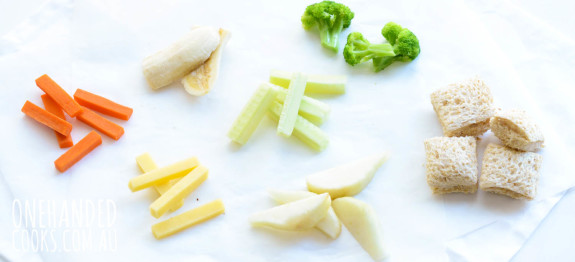How to Introduce New Foods to Kids
How to introduce new foods to kids
Whether your children are good eaters, are fussy with food or a mix of both, introducing new foods or entire meals often causes an increase in anxiety at meal times for many parents. Especially when it is much easier to offer them foods they know, accept and eat. Enjoying a wide variety of nutritious foods from each of the five food groups is essential for optimal health and wellbeing. It ensures an intake of all the important essential vitamins and minerals including iron, zinc and calcium, which are necessary for their growth, development and immunity. Kids can easily narrow down their food choices to only a few favourite foods each day. This is particularly concerning for parents, especially if their children were once good eaters. Being patient, consistent and encouraging towards your children’s positive eating behaviours is the key to getting kids to accept and enjoy new foods and increase their enjoyment at meal times.
MAKE MEAL TIMES ENJOYABLE
Making meal times enjoyable and relaxing is the best place to start. Allow your children to eat as little or as much as they like of the food they are being offered and try to avoid unrealistic expectations. It might mean you need to work on this for a few days before even thinking about putting new foods on the plate but it will be worth it.
INCLUDE THE KIDS
Encourage your older children to help choose a new meal for the family that week, take them shopping and ask them to pick out a new vegetable or involve them in meal preparation and cooking of the new meal or food. Even growing a little herb or veggie garden with the kids can help.
OFFER KNOWN ACCEPTED FOODS
Always offer at least one or two foods that you know your children will accept and eat when serving a new food or meal to them at mealtimes. It will be comforting to you that they will eat at least something and it will be comforting to them to see something familiar on their plate.
BE PATIENT AND CONSIDER THE STEPS TO EATING
There are many steps to eating a new food that children need to be comfortable with before they will actually eat and swallow it. It’s all part of learning. Some children accept new food easily and will put it in their mouth straight away. Other children will take much longer and need to be offered the food on many different occasions before they will touch it or smell it, let alone put it in their mouth. The same child might also treat new foods differently depending on the type of food being offered. This process can take a long time and being patient, allowing your children time to play with their food and become familiar with it will help eventual acceptance and enjoyment of the food. Simply offer again and again and again. And don’t forget to praise your children when they display positive eating behaviours. They love it.
EAT WITH YOUR CHILDREN
It is often underestimated how much children learn about eating when they have their family eating with them. Especially when they are presented with a new food or meal. Having someone, particularly someone they trust, demonstrate how to eat the new food and show enjoyment will encourage them to accept and enjoy it too.
DON’T OFFER ALTERNATIVES
When a new food or meal is refused it is important not to offer any alternatives of preferred foods e.g. a piece of fruit, tub of yoghurt or a sandwich. Children learn quickly and will begin to refuse food more often if their preferred foods are not offered. As mentioned above, offering at least one or two preferred foods at each meal time will give you reassurance that they have eaten something and they will learn to accept the meal that they have been offered. Being consistent on a day-to-day basis will help make the transition to this way of eating much easier for everyone.
GET CREATIVE
Don’t forget to offer the new foods in a variety of ways. If they refuse it served one way they may be more accepting when served a completely different way. Younger children may also like to make shapes or faces out of new foods. They are more likely to be relaxed and have fun and of course will be more likely to touch and interact with the food too.
TRY A LEARNING PLATE
Having a ‘learning plate’ on the table when offering new foods can be a great way to introduce a new food or regularly refused food to your children. It is an alternative way to encourage familiarity and acceptance without the expectation that they need to eat it. Kids can place the new food on the learning plate, a smaller plate next to their dinner plate, and it gives you an opportunity to talk about the new food and why it is important in their diets.
As seen in our Spring magazine. You can read more about the current and back issues of our magazines and buy them online here:
Summer Magazine – on sale now
Join us on Facebook for other foodie bits and pieces.



























